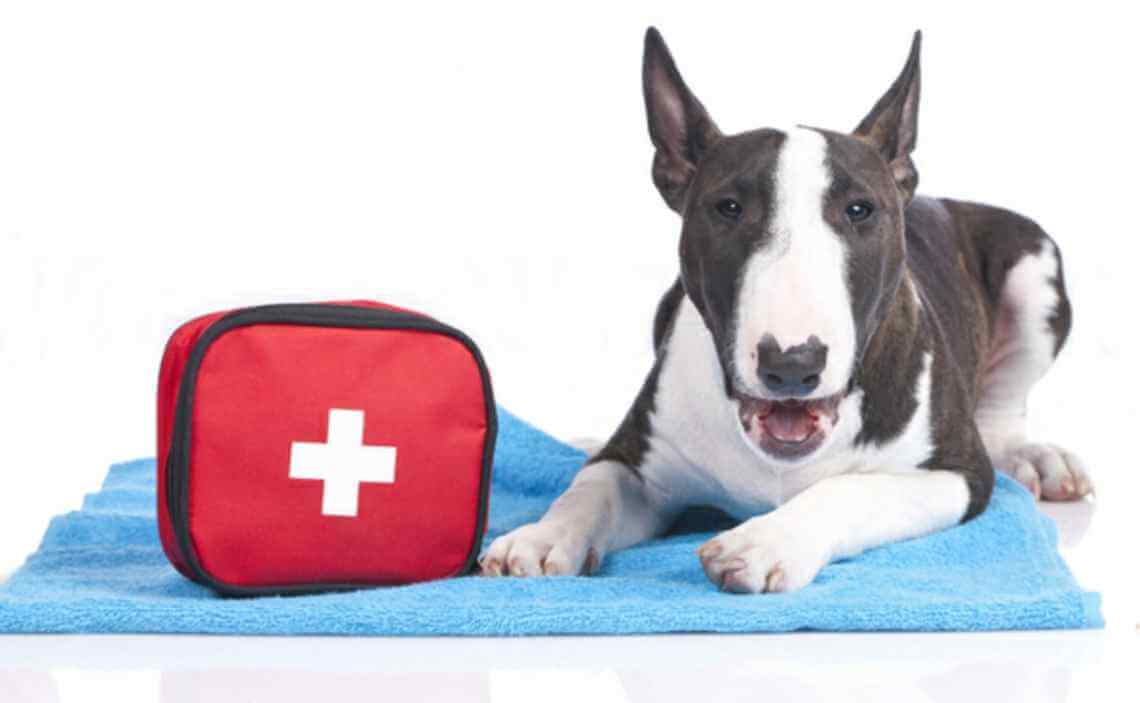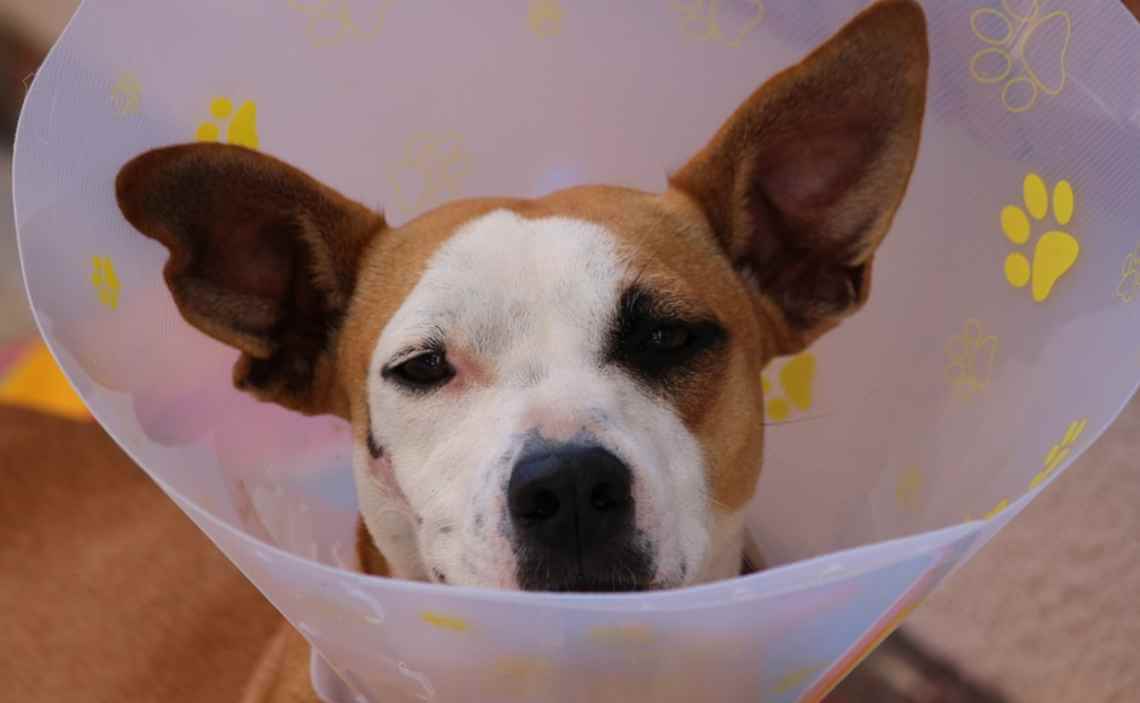
Emergencies can happen at any time, whether you’re at home, hiking dog-friendly trails or out camping. Everyone who shares a home with a dog should have a basic dog first aid kit on hand. Keep your first aid kit in your home and take it with you (or make another one for the car) when you are traveling with your dog.
This list will help you gather everything you need for a do-it-yourself canine first aid kit. In addition to these items, remember to include important paperwork, such as medical records, vaccination records and emergency phone numbers.
-
Canine First Aid Manual
This practical reference guide provides information on:
- First aid
- Illness
- Injury assessment
- Toxic foods.
This guide also gives you emergency planning including natural disaster preparation and survival guide.
-
Blood clotting powder
Blood clotting powder will help stop bleeding from gashes, bites and even “quickened” or torn toenails.
-
Gauze
Sanitized gauze is an essential item for all first aid kits.
-
Non-stick bandages
Self-adhering water-repellent bandages work well on dogs without sticking to their fur. They are inexpensive and offer non-slip support.
-
Adhesive tape
Self-adhering tape can be useful in an emergency situation.
-
Splints
Look for foam-covered, moldable, bendable splint rolls to minimize your dog’s movement in the case of a broken bone or other injury.
-
Cotton balls
Organic cotton balls are super soft and can be used to clean up wounds or applying medication.
-
Saline wound wash
A bottle of saline wound wash can be used to flush out a wound. You can also ask your veterinarian to sell you a bottle of chlorhexidine diacetate or povidone iodine solution to have on hand to clean your dog’s wounds.
Note: Do NOT use hydrogen peroxide to clean a wound as it can actually slow healing.
-
Antibiotic spray or ointment
Antibiotic sprays and ointments can be used to treat cuts, sores, rashes, dry skin and allergies. They’re safe for dogs, even if they’re accidentally ingested.
-
Milk of Magnesia or charcoal
Milk of Magnesia or charcoal can be used to absorb and counteract poisons; just be sure to call your veterinarian to determine the right dose for your pup.
-
Pet thermometer
Look for a pet thermometer that is easy to read and gives quick results. You will need a pet thermometer to determine whether your pup has a fever or not. There are oral, rectal and ear thermometers on the market. If you choose a rectal thermometer, make sure and include some water-based lubrication in your kit so you don’t tear the lining of your dog’s rectum (and it will be more comfortable for your dog if you use lubrication).
-
Moisture-proof pill organizer
In the event your dog needs more than one medication, a pill organizer will keep his or her medication organized and prevent damage due to moisture.
-
Blunt-tipped scissors
Scissors are handy to have in a first aid kit to cut bandages, tape or make it easier to remove bandages. The blunt tip decreases the chances of cutting your dog.
-
Tweezers
Tweezers are handy in case you need to remove a splinter or bee stinger out of your dog’s paw.
-
Tick remover
A tick remover is used to remove an embedded tick from your dog’s skin. Do not crush the tick when removing it. Put the tick in a jar and bring with you to your veterinarian. Ticks can carry Lyme disease, Rocky Mountain Spotted Fever and other diseases.
-
Magnifying glass
A magnifying glass is useful to magnify cuts, wounds, splinters or other injuries.
-
Syringes
Syringes are useful for flushing out a wound or to give oral medications to your dog.
-
Flashlight
A flashlight can be very useful in an emergency situation. Make sure your flashlight is water-proof and durable. And make sure you keep extra batteries on hand.
-
Emergency warming blanket
An emergency warming blanket can be used to keep your dog warm in the event of cold weather or to help minimize shock.
-
Instant cold packs
Instant cold packs can be used to decrease swelling and inflammation after a minor injury, strain, sprain or bee or wasp sting. Cold packs are not to be used to cool down an over-heated dog, as this can constrict skin and blood vessels and actually slow core cooling. 
-
Towel
Consider investing in a dog towel that is super-absorbent and machine-washable. Dog towels are made out of a soft microfiber.
-
Soft muzzle
A soft muzzle can be used if your dog becomes frantic; a muzzle can be used to keep them from biting. Look for a soft, breathable muzzle that will be comfortable on your dog.
-
Collar and leash
Keep an extra collar and leash in your first aid kit in the event your dog’s collar or leash snap. Make sure your back-ups are reflective and water-resistant.
-
Travel bowls
Portable, collapsible water and food bowls may be needed if you have to transport your dog and he or she has to stay overnight somewhere.
-
Benadryl
Bendryl is a common brand name for diphenhydramine. Benadryl is commonly used for bee or wasp stings or other allergic reactions. Make sure the medication you buy only has diphenhydramine in it. Sometimes diphenhydramine is combined with other cold + flu medications. You will also need to contact your veterinarian to determine the right dose for your dog.
Do you have a dog first aid kit in your home and car? What items should be added to this list? Please comment below…













Excellent articles about K-9 minds, health, and much more. Do you have info about any company that has the emerg. First aid kits assembled for sale?
I don’t have a specific recommendation but there are many kits to choose from on Amazon or you could visit a pet store. Thanks for stopping by the Canine Campus blog!